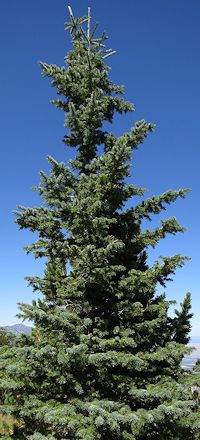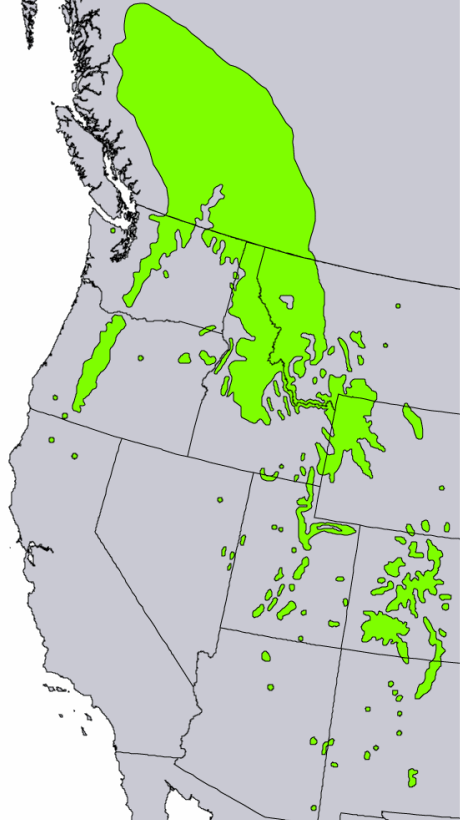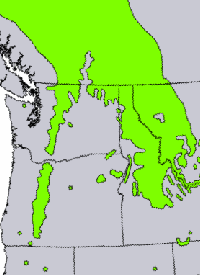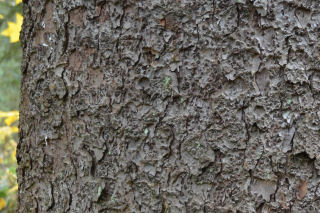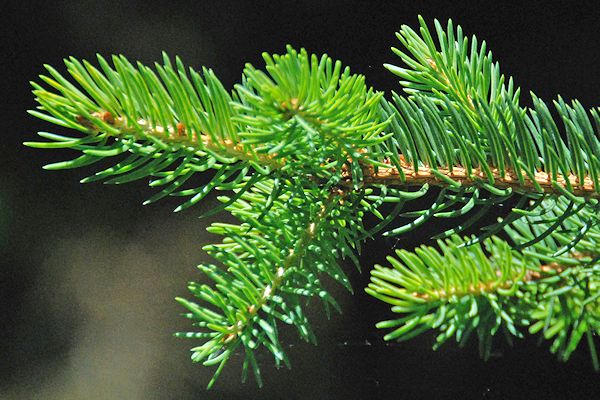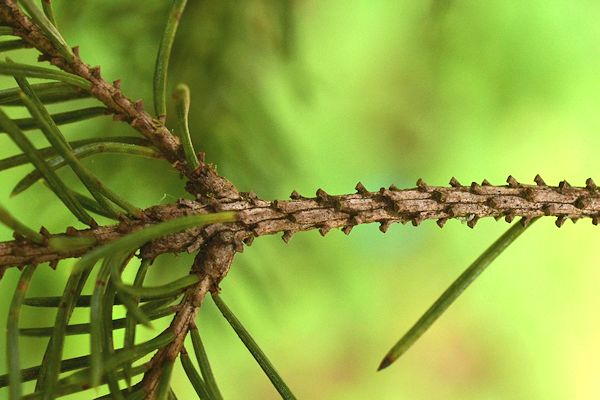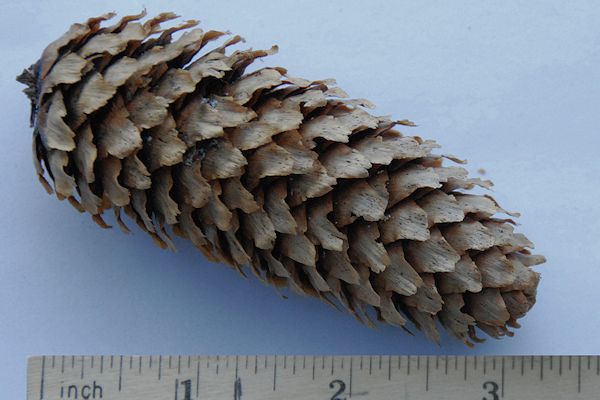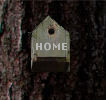 |
Northwest Conifers |
AboutAll ConifersConifersLow-elevationHigh-elevationOthersEast SideSouthwestNon-natives——————Conifer ConesIndexMore Info |
Engelmann Spruce – Picea
engelmannii
|
|
|
This mountain native is a medium size tree that grows to 130 feet (40 meters), about half the size of a tall Sitka spruce. Needles: The needles of Engelmann spruce are thin and sharp like other spruce trees and stick out all around the twig like a bottle brush. You can easily identify spruce trees by touching their sharp needles. Also, spruce needles are unique in growing from short, woody pegs that remain after the needles fall off. Cones: The 3-inch cones are similar to those of mountain hemlock, but the scales are paper-thin, narrower and come to a point. Bark: The the thin, gray bark breaks into small scales on large trees.
Where it grows: Engelmann spruce grows in the mountains east of the Cascades crest above 3000 feet (900 meters). Although it is not common in the Cascades, it is more abundant in the mountains to the east in Idaho and Montana. It is shade tolerant, and some shade is required for the healthy development of seedlings. You can find Engelmann spruce growing under a canopy of large trees where it competes well with other shade-tolerant conifers. Engelmann spruce at Hoyt Arboretum. Similar Tree: Sitka spruce grows only at low elevations along the Pacific Coast and Columbia River. The easiest way to distinguish Engelmann spruce from Sitka spruce is by location. You can also distinguish them by rolling a needle between your fingers. The flat Sitka needle will not roll, but the square-shaped Engelmann needle will. Uses: Like other spruces, Engelmann spruce is used for making paper, lumber, and fine musical instruments such as guitars and violins. Names: Engelmann spruce is named after nineteenth-century physician and botanist George Engelmann. Other common names: Silver spruce, white spruce, and mountain spruce. |
Spruce needles with unique pegs |
© 2011 Ken Denniston

